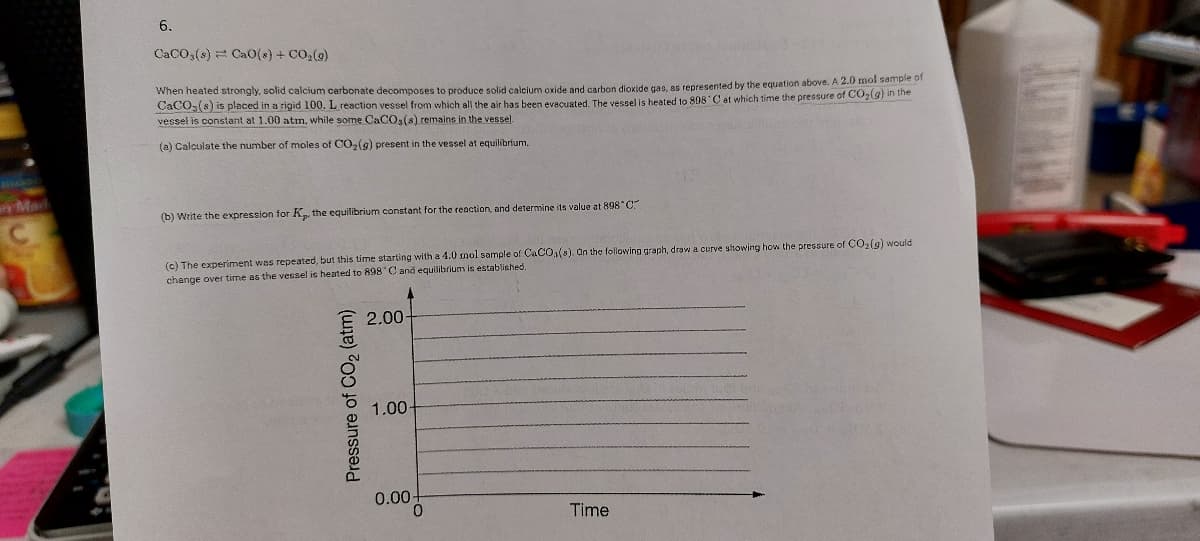CaCO3(s) CaO(s) + CO₂(g) When heated strongly, solid calcium carbonate decomposes to produce solid calcium oxide and carbon dioxide gas, as represented by the equation above. A 2.0 mol sample of CaCO (8) is placed in a rigid 100. L reaction vessel from which all the air has been evacuated. The vessel is heated to 808 C at which time the pressure of CO₂(g) in the vessel is constant at 1.00 atm, while some CaCO3(s) remains in the vessel. (a) Calculate the number of moles of CO₂(g) present in the vessel at equilibrium. (b) Write the expression for K₂, the equilibrium constant for the reaction, and determine its value at 898 C (c) The experiment was repeated, but this time starting with a 4.0 mol sample of CaCO3(s). On the following graph, draw a curve showing how the pressure of CO₂(g) would change over time as the vessel is heated to 898 C and equilibrium is established. Pressure of CO₂ (atm) 2.00 1.00- 0.00+ 0 Time
Ideal and Real Gases
Ideal gases obey conditions of the general gas laws under all states of pressure and temperature. Ideal gases are also named perfect gases. The attributes of ideal gases are as follows,
Gas Laws
Gas laws describe the ways in which volume, temperature, pressure, and other conditions correlate when matter is in a gaseous state. The very first observations about the physical properties of gases was made by Robert Boyle in 1662. Later discoveries were made by Charles, Gay-Lussac, Avogadro, and others. Eventually, these observations were combined to produce the ideal gas law.
Gaseous State
It is well known that matter exists in different forms in our surroundings. There are five known states of matter, such as solids, gases, liquids, plasma and Bose-Einstein condensate. The last two are known newly in the recent days. Thus, the detailed forms of matter studied are solids, gases and liquids. The best example of a substance that is present in different states is water. It is solid ice, gaseous vapor or steam and liquid water depending on the temperature and pressure conditions. This is due to the difference in the intermolecular forces and distances. The occurrence of three different phases is due to the difference in the two major forces, the force which tends to tightly hold molecules i.e., forces of attraction and the disruptive forces obtained from the thermal energy of molecules.

Trending now
This is a popular solution!
Step by step
Solved in 5 steps with 1 images









